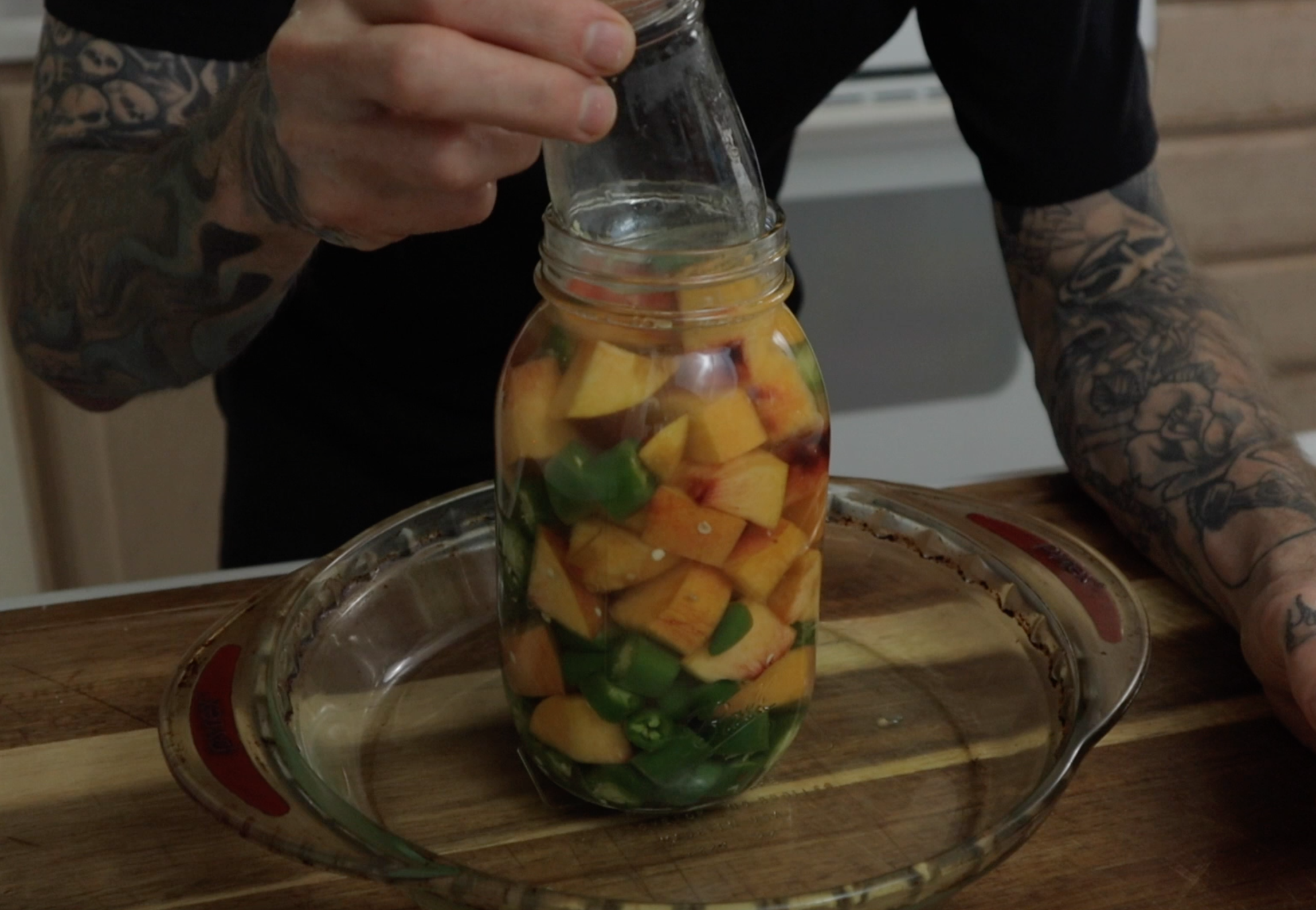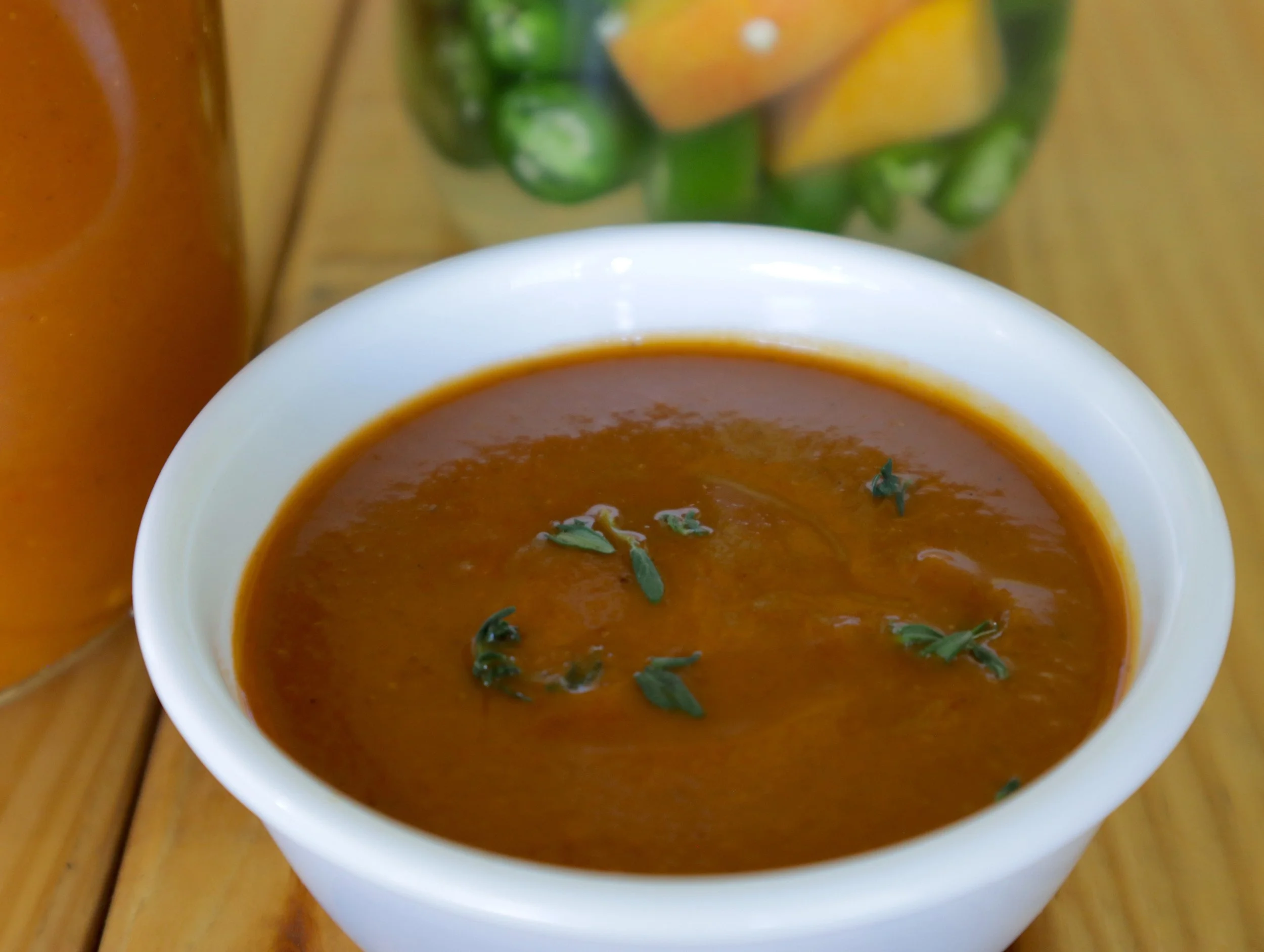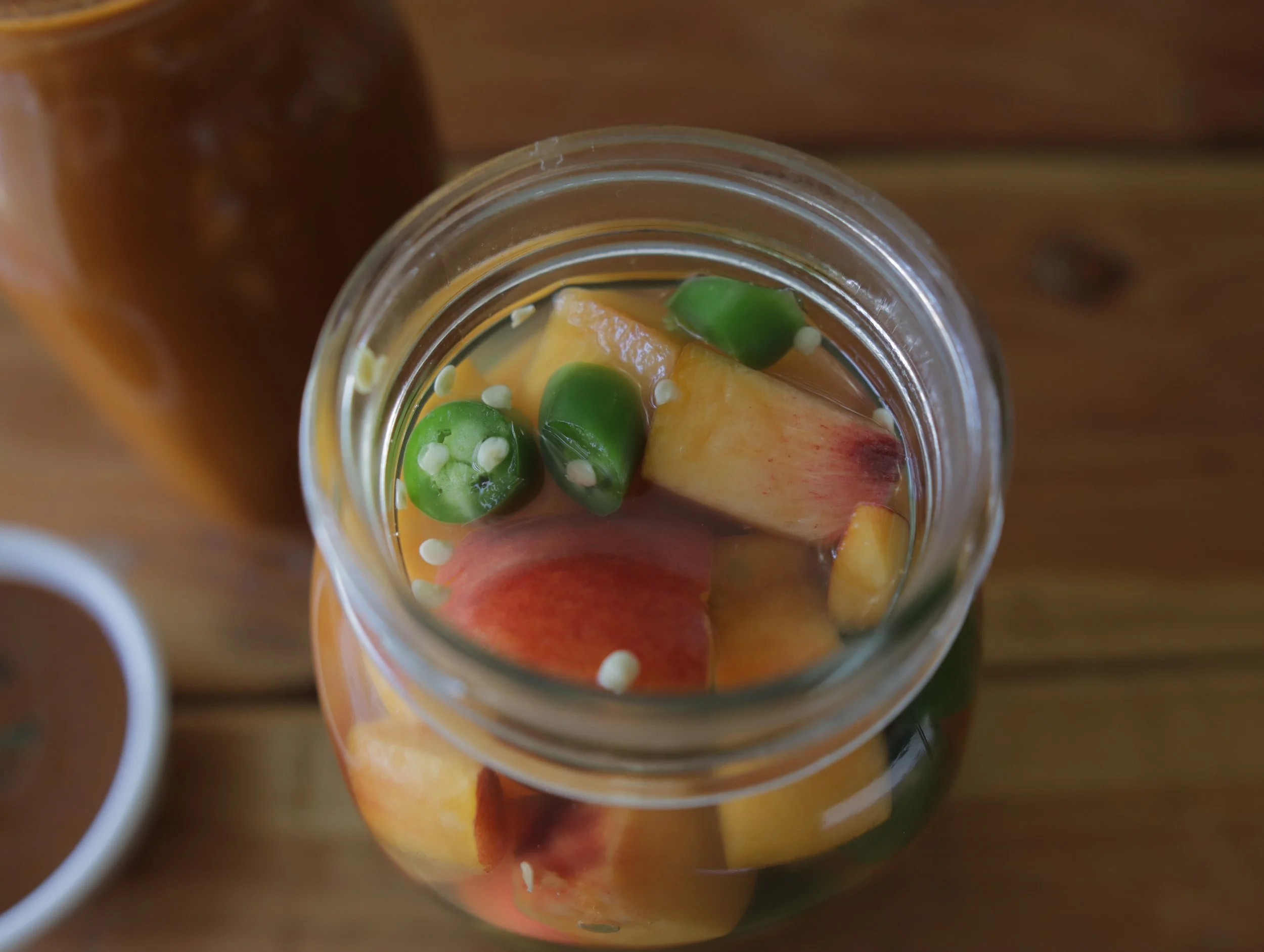Peach and Serrano BBQ Sauce - The Magic of Fermentation
Wow, this bbq sauce has a depth of flavor I have ever had! Lacto fermentation really pulls out natural flavors that the peaches, serrano peppers and tomatoes have. Plus, I use the brine from the fermentation process in the sauce giving it even more flavor. Clearly, this will not be your ordinary way of making a bbq sauce. BUT, the flavors it has is out of this world. Sweet, hot and slightly salty. Watch the peach bbq sauce video on my YouTube channel. I will show to options below on making the sauce. One way keeps the live active bacteria, the other way doesn’t. More details below.
Ingredients:
1 large peach or 2 small peaches
Water (filtered or bottled spring water)
1 -2 drops fresh squeezed lemon juice
7-8 cumin seeds
10 serrano
501 g fermented tomatoes plus or minus 2 g (uses fermented tomatoes, see blog post)
For the bbq sauce:
***We’re basically making the ketchup and the sauce all at the same time.
2 tbsp molasses
1/3 c brown sugar
1 tbsp apple cider vinegar
1 shallot
2 cloves garlic
1 tbsp garlic powder
1 tbsp onion powder
2 t dried oregano
1 tsp cumin seed
1 t mustard seed
1 tbsp oil
Black pepper
Pinch salt
1 tbsp chili powder
1 tbsp paprika
Tools needed:
Cutting board
Sharp knife
2 mason jars
Immersion blender
Stock pot
Fine mesh strainer
Stove top
How to make the fermented peach and serrano:
Wash all produce and utensils. Everything needs to be clean and sanitized when lacto fermenting.


Cut peaches into 2 inch pieces and serrano peppers into 1 inch lengths. I keep the seeds, but I do look to make sure that they are whitish in color and not dark. The dark seeds are bad and rotting, scrape those out and discard. Place empty Mason jar on scale and zero it out. Place cumin seeds in the jar along with serrano and peach. Cover fill the jar with water up to the neck of the jar. Add a drop or 2 of lemon juice. The juice helps neutralize any presence of chloramine in filtered water. Record that weight. Take that weight and multiply it by 2.5%. This is the amount of fine sea salt we will need to make the brine.
For example: if the ingredients plus water weighs 870 g, that is to be multiplied by .025. This equals 21.75. This is the amount in grams of fine sea salt we need. Round up to the nearest whole number of your scale doesn't read decimal points. In this case, 22 g of fine sea salt is what we need for the brine.



Now, with the lid from a mason jar, cover the ingredients and pour out the water into another mason jar. Place jar with the water on the scale, zero it out. Slowly add your salt until the scale reads 22 g. You can weight the salt in a small dish on the scale (zero out of course) if desired to eliminate the possibility of adding too much salt to the brine. With the 22 g salt added to the water, cover jar with lid and shake vigorously to dissolve the salt. Pour the newly made brine into the jar with the ingredients. Place a weight in the jar to keep everything underneath the brine surface level. This is an anaerobic environment, meaning no oxygen. This is an important part because if anything touches air, it will mold and you will need to start over. Place your jar in a part of your kitchen that stays a steady temperature. 68-75 degrees is where fermentation projects are happiest. This will ferment 5-12 days depending on your taste. I let mine go for 12 days with great results. Kahm yeast may form, which is harmless. It can have an undesirable flavor to some people though. Kahm yeast can indicate a brine not salty enough, too hot of ambient temperature or the brine has been exposed to too much air.
For the sauce: (there’s 2 ways to go about this). One way keeps the live bateria and another way doesn’t. I make this sauce as a product to sell in the future, therefore it needs to be cooked to certain temperatures killing ALL bacteria
Option 1: Kills the live active bacteria
Slice the shallot thinly and rough chop the garlic. Heat up a stock pot over medium low heat (3 on the dial). Add oil and shallots to the cold pot with a pinch of salt. Sweat the shallots until they turn translucent and start to caramelize. Deglaze pan with vinegar. This is to help the shallots caramelize. Once the vinegar is reduced to almost nothing, add chili powder, paprika, mustard seeds, dried oregano and raw garlic. Season garlic with a pinch of salt. Stir in the spices and cook for 30 seconds to bloom the spices and to cook the rawness off the garlic. Stir in the garlic powder, onion powder, molasses and brown sugar.
***Strain out the fermented peaches with serrano and the tomatoes, keeping the brine from both. Add the peaches, serrano and tomatoes to the pot. Add just enough brine to cover the ingredients. Crank up the heat to medium (5 on the dial) and bring to a simmer. Continue to simmer for 8-10 minutes, stirring frequently. Check to see if the peaches and peppers are cooked thoroughly by piercing them with a fork. No resistance when ready to blend.
Option 2: (This keeps the live active bacteria)
Skip the part where the fermented peach, serrano and tomatoes get added to the stock pot. Instead, let the contents in the stock pot to cool. Strain content from both jars, reserving the brine from both jars. Add the peppers, peaches and contents in tomato jar less the rosemary to a high powered blender with the brine from the peaches and serrano. Blend for 30 seconds adding more brine as needed to get a smooth sauce. The amount of brine you add determines how thin or thick you want your sauce. You can leave less brine to begin with and add as needed to blend into a smooth sauce. Strain if desired.



With and immersion blender, puree the ingredients adding more brine as needed to get a “whirlpool effect” going as it purees. If you have a blender, cool slightly before blending as a safety precaution. I added an additional 1 c of brine to aid in pureeing the sauce. You can add more brine if you like a thinner sauce of course.
Strain the sauce to remove the pulp through a fine mesh strainer. Allow the sauce to cool and put in a jar. This will keep for 1-2 weeks for sure in the refrigerator. However, if you have litmus paper or a digital pH tester, check the pH of the sauce. If it is 3.5 to 3.8 or, the sauce will keep much longer. Up to 3 months if you don’t use it by then. I always keep mine refrigerated. If you need to bring the acidity from let’s say from 4.5 to 3.5, add some vinegar to it. This will get your pH to a range you need your sauce to be for it to be shelf stable. Keep in mind, adding vinegar to it will change the flavor profile slightly. You can add some brine to the sauce to thin it out after it cools too. This will introduce a little bit of the live bacteria culture back into the sauce. I Doubt it will become active given the amount of vinegar in the sauce.
I put this on chicken wings, baked whole chicken, steak and egg! It takes some unmanaged time to make this sauce and has a few steps to it, BUT it is well worth the time and effort!
Enjoy and let me know what you put your hot sauce on.
Logan
***Side note You can keep the pulp to dry out and grind with a spice grinder. Just bake it at the lowest oven temperature for about 3 hours, turning pan and pulp around every hour. Cool and grind with spice grinder, add salt for a beautiful seasoned salt!





